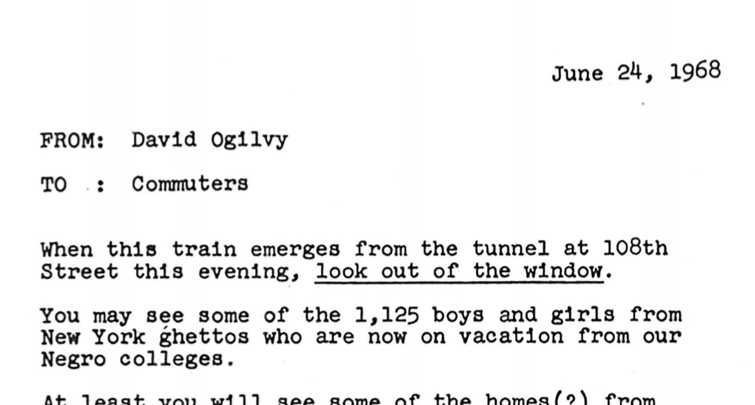another reminder that David Ogilvy knew what he was doing
 Monday, March 28, 2011 at 8:04AM
Monday, March 28, 2011 at 8:04AM 
Mark Phillips, of London's Bluefrog Agency, recently posted this item on SOFII about David Ogilvy's 1968 letter for the United Negro College Fund. Take a look and grab the pdf. It's a great and really instructive look at how to connect with a specific target audience, based on thinking about who they are, what they do and where they are – and actually doing something with all that.
And it's the opposite of what far too many advertisers are doing today. Because too many people on both the client side and agency side continue to harbour the frankly goofy impression that humans as a species no longer read.
Sure, some people don't read much. Some people never have. Thinking that social media has replaced all other forms of social interaction so that all your advertising has to be under 140 characters is a recipe for failure.
For instance, working on DMs aimed at C-level executives over the past decade, I've had suits and clients insist that senior execs don't read – "they're far too busy" apparently – as a way of bludgeoning me into keeping the copy brief. But that meant there was nothing in what we ended up sending out that could get their interest; beyond a slick headline and picture, there was no reason for them to engage in our communication, and no way for them to be moved.
Think about subway advertising, and how few ads there take advantage of the fact that their target audience is sitting there doing not much. Perfect opportunity to hold their attention with long copy. By, say, telling a story. But I digress.
What Ogilvy did was simple – exploit everything he knew about the audience (even, it has to be said, fears and racial unrest that don't read so well today) in order to make a connection with them and move them to action.
Keep that in mind next time you write a brief. Or approve a brief. Or work with one.
 Ogilvy,
Ogilvy,  SOFII,
SOFII,  consumer,
consumer,  direct mail
direct mail